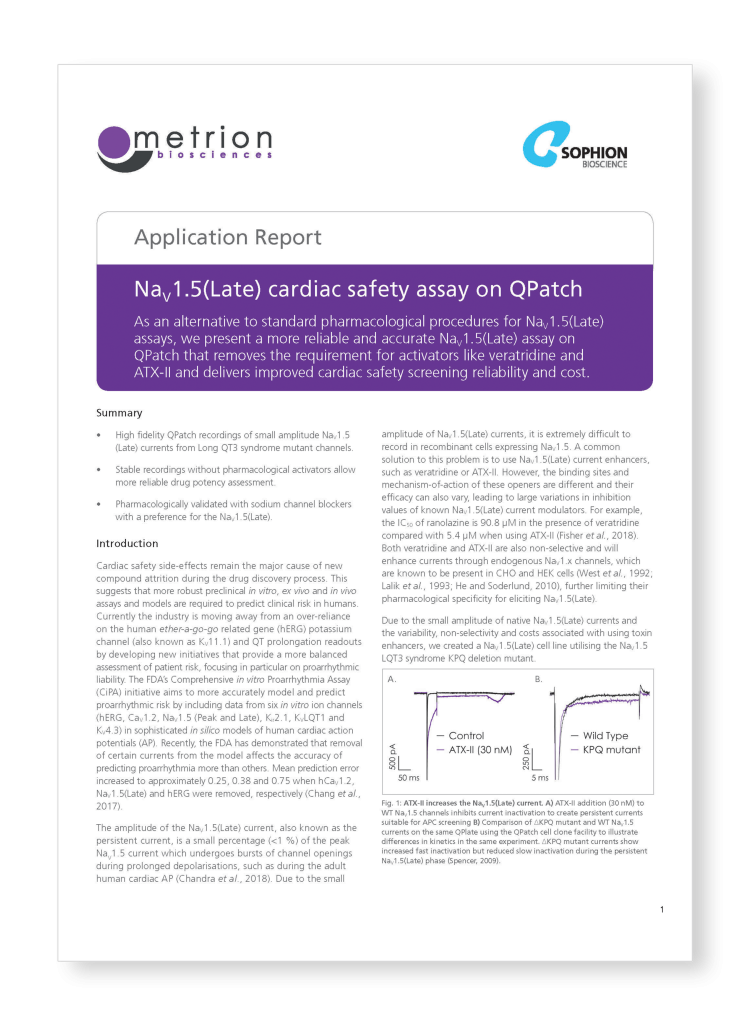NaV1.5(Late) cardiac safety assay on QPatch – Application Note

Application note
Application note title
NaV1.5(Late) cardiac safety assay on QPatch
Summary
As an alternative to standard pharmacological procedures for NaV1.5(Late) assays, we present a more reliable and accurate NaV1.5(Late) assay on QPatch that removes the requirement for activators like veratridine and ATX-II and delivers improved cardiac safety screening reliability and cost.
Please contact us if you would like any further information regarding our suite of cardiac safety screening services or CiPA screening services.
Extract
Introduction
Cardiac safety side-effects remain the major cause of new compound attrition during the drug discovery process. This suggests that more robust preclinical in vitro, ex vivo and in vivo assays and models are required to predict clinical risk in humans. Currently the industry is moving away from an over-reliance on the human ether-a-go-go related gene (hERG) potassium channel (also known as KV11.1) and QT prolongation readouts by developing new initiatives that provide a more balanced assessment of patient risk, focusing in particular on proarrhythmic liability. The FDA’s Comprehensive in vitro Proarrhythmia Assay (CiPA) initiative aims to more accurately model and predict proarrhythmic risk by including data from six in vitro ion channels (hERG, CaV1.2, NaV1.5 (Peak and Late), Kir2.1, KVLQT1 and KV4.3) in sophisticated in silico models of human cardiac action potentials (AP). Recently, the FDA has demonstrated that removal of certain currents from the model affects the accuracy of predicting proarrhythmia more than others. Mean prediction error increased to approximately 0.25, 0.38 and 0.75 when hCaV1.2, NaV1.5(Late) and hERG were removed, respectively (Chang et al., 2017).
The amplitude of the NaV1.5(Late) current, also known as the persistent current, is a small percentage (<1 %) of the peak NaV1.5 current which undergoes bursts of channel openings during prolonged depolarisations, such as during the adult human cardiac AP (Chandra et al., 2018).
Other recommended publications


Let’s work together
What are your specific ion channel and assay needs?
If you have any questions or would like to discuss your specific assay requirements, we will put you directly in touch with a member of our scientific team. Contact us today to discover more.
